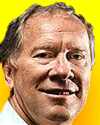
Born 25 Oct 1945; died 19 Dec 1997 at age 52. quotes
American theoretical astrophysicist who was an authority on the particle-physics aspects of the Big Bang theory of the origin of the universe. He considered the nuclear physics involved in the synthesis of the light elements created during the Big Bang comprising mainly hydrogen, with lesser quantities of deuterium, helium, lithium, beryllium and boron. He predicted, from cosmological considerations, that a third family of neutrinos existed - which was later proven in particle accelerator experiments (1989). Schramm worked to evaluate undetected dark matter that contributed to the mass of the universe, and which would determine whether the universe would ultimately continue to expand. He died in the crash of the small airplane he was piloting.«
American theoretical astrophysicist who was an authority on the particle-physics aspects of the Big Bang theory of the origin of the universe. He considered the nuclear physics involved in the synthesis of the light elements created during the Big Bang comprising mainly hydrogen, with lesser quantities of deuterium, helium, lithium, beryllium and boron. He predicted, from cosmological considerations, that a third family of neutrinos existed - which was later proven in particle accelerator experiments (1989). Schramm worked to evaluate undetected dark matter that contributed to the mass of the universe, and which would determine whether the universe would ultimately continue to expand. He died in the crash of the small airplane he was piloting.«
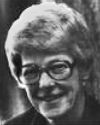
Born 25 Oct 1921; died 28 Oct 1997 at age 76. quotes
American immunologist who discovered that the differences in amino acid composition of antibodies explains the efficiency and effectiveness with which they combat a huge range of foreign invaders. During WWII, her post-graduate studies included assisting with projects developing an Asiatic cholera vaccine, and combatting transmission of airborne pathogens in army barracks. In 1970 she became a professor of Microbiology and Immunology, after which she discovered the J chain (a B cell antibody subunit). In 1991, with colleagues, she identified a specialized intracellular pathway that transports antibodies into blood circulation, allowing for the multiplication of B cells essential in fighting infection.«*
American immunologist who discovered that the differences in amino acid composition of antibodies explains the efficiency and effectiveness with which they combat a huge range of foreign invaders. During WWII, her post-graduate studies included assisting with projects developing an Asiatic cholera vaccine, and combatting transmission of airborne pathogens in army barracks. In 1970 she became a professor of Microbiology and Immunology, after which she discovered the J chain (a B cell antibody subunit). In 1991, with colleagues, she identified a specialized intracellular pathway that transports antibodies into blood circulation, allowing for the multiplication of B cells essential in fighting infection.«*
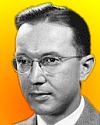
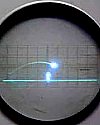
American physicist who invented the first video game, Tennis for Two, as entertainment for the 1958 visitor day at Brookhaven National Laboratory, where he worked (1947-84) then as head of the Instrumentation Division. It used a small analogue computer with ten direct-connected operational amplifiers and output a side view of the curved flight of the tennis ball on an oscilloscope only five inches in diameter. Each player had a control knob and a button. Late in WW II he became electronics group leader at Los Alamos, New Mexico, where the nuclear bomb was developed. After the war, he became active with other nuclear scientists in establishing the Federation of American Scientists to promote nuclear non-proliferation.«[Image right: Oscilloscope display of Tennis for Two showing horizontal line for court, short vertical line for net and curve of tennis ball flight.]
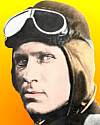
Born 25 Oct 1890; died 25 Apr 1928 at age 37.
American aviator who piloted the explorer Richard E. Byrd on the first successful flight over the North Pole on 9 May 1926, in a three-engine Fokker monoplane, Josephine Ford. They flew 1,360 miles from King's Bay, Spitzbergen, to the Pole and back in 15-1/2 hours. During his aviation duty in the Navy Bennett had met Byrd (1925) as his commander on the Donald B. MacMillan expedition to northwestern Greenland. Byrd realized that Bennett was more than a good pilot, he was fearless, and one of the finest practical men in the Navy for handling an airplane's temperamental mechanisms. Together, they planned the North Pole flight. For his share in the achievement Bennett received the Congressional Medal of Honor.
American aviator who piloted the explorer Richard E. Byrd on the first successful flight over the North Pole on 9 May 1926, in a three-engine Fokker monoplane, Josephine Ford. They flew 1,360 miles from King's Bay, Spitzbergen, to the Pole and back in 15-1/2 hours. During his aviation duty in the Navy Bennett had met Byrd (1925) as his commander on the Donald B. MacMillan expedition to northwestern Greenland. Byrd realized that Bennett was more than a good pilot, he was fearless, and one of the finest practical men in the Navy for handling an airplane's temperamental mechanisms. Together, they planned the North Pole flight. For his share in the achievement Bennett received the Congressional Medal of Honor.
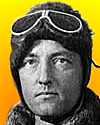
Born 25 Oct 1888; died 11 Mar 1957 at age 68. quotes
Richard Evelyn Byrd, Jr. was an American explorer, aviator and scientist who was the first man to fly over both of the Earth's poles. From age 13, he showed an adventurous spirit, by travelling alone around the world. He joined the Navy, and by WW I, in the naval avaiation division, he was commander of U.S. Navy aviation forces in Canada. To improve aerial navigation for occasions when no land or horizon would be visible, he developed a bubble sextant and a drift indicator. After the war, he made one of the early nonstop transatlantic flights. On 9 May 1926, to demonstrate the practicability of aerial polar exploration, he and a copilot circled the North Pole. During an Antarctic expedition, he organized scientific studies, surveying, and collection of meteorological and radiowave propagation data. On 28-29 Nov 1929, with three crew, he made a flight to the South Pole.«
Richard Evelyn Byrd, Jr. was an American explorer, aviator and scientist who was the first man to fly over both of the Earth's poles. From age 13, he showed an adventurous spirit, by travelling alone around the world. He joined the Navy, and by WW I, in the naval avaiation division, he was commander of U.S. Navy aviation forces in Canada. To improve aerial navigation for occasions when no land or horizon would be visible, he developed a bubble sextant and a drift indicator. After the war, he made one of the early nonstop transatlantic flights. On 9 May 1926, to demonstrate the practicability of aerial polar exploration, he and a copilot circled the North Pole. During an Antarctic expedition, he organized scientific studies, surveying, and collection of meteorological and radiowave propagation data. On 28-29 Nov 1929, with three crew, he made a flight to the South Pole.«
The Last Explorer: The Adventures of Admiral Byrd, by Edwin P. Hoyt. - book suggestion.
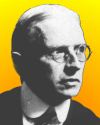
American astronomer and astrophysicist who showed the relationship between a star's brightness and its spectral type, in what is usually called the Hertzsprung-Russell diagram, and who also devised a means of computing the distances of binary stars. As student, professor, observatory director, and active professor emeritus, Russell spent six decades at Princeton University. From 1921, he visited Mt. Wilson Observatory annually. He analyzed light from eclipsing binary stars to determine stellar masses and he measured parallaxes. Russell popularized the distinction between giant stars and “dwarfs” while developing an early theoryof stellar evolution. He applied Meghnad Saha's theory of ionization to stellar atmospheres and determined elemental abundances, confirming Cecilia Payne-Gaposchkin's discovery that the stars are composed mostly of hydrogen. Russell was a dominant force in U.S. astronomy.
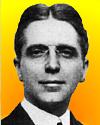
Born 25 Oct 1873; died 26 Aug 1935 at age 61.
American industrialist who developed early automotive production. In 1912-18, Willys' output ranked second only to Ford. Willys first saw an early automobile in 1899, realized its potential, and came a car salesman. By 1907, his sales out-stripped his supplier's ability to produce, so he stepped in and reorganized the faltering Overland Company in Indianapolis. He successfully increased production, and expanded the Willys-Overland plant into a larger factory in Toledo, Ohio. During WW I, Willys-Overland became a major producer of trucks, airplanes and airplane engines. After his death, the Willys-Overland company pioneered the WW II Jeep, a rugged off-road vehicle. In 1970, the company was bought by American Motors Corporation.«
American industrialist who developed early automotive production. In 1912-18, Willys' output ranked second only to Ford. Willys first saw an early automobile in 1899, realized its potential, and came a car salesman. By 1907, his sales out-stripped his supplier's ability to produce, so he stepped in and reorganized the faltering Overland Company in Indianapolis. He successfully increased production, and expanded the Willys-Overland plant into a larger factory in Toledo, Ohio. During WW I, Willys-Overland became a major producer of trucks, airplanes and airplane engines. After his death, the Willys-Overland company pioneered the WW II Jeep, a rugged off-road vehicle. In 1970, the company was bought by American Motors Corporation.«
Born 25 Oct 1867; died 3 Jun 1962 at age 94. quotes
William Ernest Castle was an American biologist and geneticist who was one of the earliest experimental geneticists. Castle’s interest in natural history began as a youth growing up on a farm. From 1897, he was a biology instructor at Harvard. He was the first to adopt a variety of the fruit fly, Drosophila, for experiments (1901-1906) because of its rapid breeding of generations. In 1901, he published the first paper in America on Mendelism. He believed Mendel’s Laws would be applicable to all animals and plants. His research used small mammals, such as guinea pigs, rats and rabbits, observing inheritance of coat colors. Castle also made a connection with Darwin’s ideas on natural selection, and showed the significance of mutations in the alteration of a species.«
William Ernest Castle was an American biologist and geneticist who was one of the earliest experimental geneticists. Castle’s interest in natural history began as a youth growing up on a farm. From 1897, he was a biology instructor at Harvard. He was the first to adopt a variety of the fruit fly, Drosophila, for experiments (1901-1906) because of its rapid breeding of generations. In 1901, he published the first paper in America on Mendelism. He believed Mendel’s Laws would be applicable to all animals and plants. His research used small mammals, such as guinea pigs, rats and rabbits, observing inheritance of coat colors. Castle also made a connection with Darwin’s ideas on natural selection, and showed the significance of mutations in the alteration of a species.«
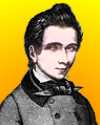
Born 25 Oct 1811; died 31 May 1832 at age 20. quotes
French mathematician famous for his contributions to the part of higher algebra known as group theory. His theory solved many long-standing unanswered questions, including the impossibility of trisecting the angle and squaring the circle. Galois died, at age 20, the day after being fatally shot in a duel with Perscheux d'Herbinville on 30 May 1832. The reasons for the duel remain enigmatic, though speculated to be related to a love affair. The night before the duel, anticipating his death, Galois wrote his will and notes on his thoughts on mathematics he wanted to leave for others to pursue. His funeral (2 Jun 1832) became the focus for a Republican rally, followed by several days of riots. There are hints that Galois had begun to develop the theory of algebraic functions, which had to wait another 40 years for the German mathematician Bernhard Riemann to complete. He was commemorated as a revolutionary and geometrician on a French postal stamp issued on 10 Nov 1984.
French mathematician famous for his contributions to the part of higher algebra known as group theory. His theory solved many long-standing unanswered questions, including the impossibility of trisecting the angle and squaring the circle. Galois died, at age 20, the day after being fatally shot in a duel with Perscheux d'Herbinville on 30 May 1832. The reasons for the duel remain enigmatic, though speculated to be related to a love affair. The night before the duel, anticipating his death, Galois wrote his will and notes on his thoughts on mathematics he wanted to leave for others to pursue. His funeral (2 Jun 1832) became the focus for a Republican rally, followed by several days of riots. There are hints that Galois had begun to develop the theory of algebraic functions, which had to wait another 40 years for the German mathematician Bernhard Riemann to complete. He was commemorated as a revolutionary and geometrician on a French postal stamp issued on 10 Nov 1984.
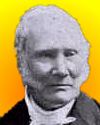
Born 25 Oct 1790; died 6 Jun 1878 at age 87.
Scottish minister and inventor of the Stirling Cycle engine. Its principles were included in his first British patent, No. 4081 (1816), which he called the heat economiser as he described methods of regenerating heat from exhaust back into input gases. He continued to refine his idea for years in his home workshop during his spare time. The first practical Stirling engine generated about 2 horsepower, spending two years pumping water out of a quarry. By 1843, he had a modified steam engine producing 37 horsepower. He was assisted in preparing further patents by his brother James, a mechanical engineer who managed a foundry where the engine was manufactured. Robert also made scientific instruments.«
Scottish minister and inventor of the Stirling Cycle engine. Its principles were included in his first British patent, No. 4081 (1816), which he called the heat economiser as he described methods of regenerating heat from exhaust back into input gases. He continued to refine his idea for years in his home workshop during his spare time. The first practical Stirling engine generated about 2 horsepower, spending two years pumping water out of a quarry. By 1843, he had a modified steam engine producing 37 horsepower. He was assisted in preparing further patents by his brother James, a mechanical engineer who managed a foundry where the engine was manufactured. Robert also made scientific instruments.«
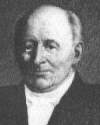
Born 25 Oct 1789; died 11 Apr 1875 at age 85.
Amateur German astronomer who discovered the 10-year sunspot activity cycle. Schwabe had been looking for possible intramercurial planets. From 11 Oct 1825, for 42 years, he observed the Sun virtually every day that the weather allowed. In doing so he accumulated volumes of sunspot drawings, the idea being to detect his hypothetical planet as it passed across the solar disk, without confusion with small sunspots. Schwabe did not discover any new planet. Instead, he published his results in 1842 that his 17 years of nearly continuous sunspot observations revealed a 10-year periodicity in the number of sunspots visible on the solar disk. Schwabe also made (1831) the first known detailed drawing of the Great Red Spot on Jupiter.
Amateur German astronomer who discovered the 10-year sunspot activity cycle. Schwabe had been looking for possible intramercurial planets. From 11 Oct 1825, for 42 years, he observed the Sun virtually every day that the weather allowed. In doing so he accumulated volumes of sunspot drawings, the idea being to detect his hypothetical planet as it passed across the solar disk, without confusion with small sunspots. Schwabe did not discover any new planet. Instead, he published his results in 1842 that his 17 years of nearly continuous sunspot observations revealed a 10-year periodicity in the number of sunspots visible on the solar disk. Schwabe also made (1831) the first known detailed drawing of the Great Red Spot on Jupiter.
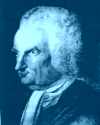
Born 25 Oct 1714; died 26 May 1799 at age 84. quotes
Scottish jurist and pioneer anthropologist who explored the origins of language and society and in some respects anticipated principles of Darwinian evolution. In his theory, he maintains that man was at first a mere animal, that he walked on all fours, and that he possessed a tail, of which we discover the rudiments. There has been a progression in mankind from one stage to higher, they erect themselves, they learn the use of their hands, and they learn to swim. They lived first on natural fruits, and then learned hunting and fishing. He is not so trustworthy as Darwin in his facts: he tells us that there is a whole nation of Esquimaux with only one leg; that in Ethiopia men have only one eye, and this in their foreheads. He also believed in mermaids.[Enc. Brit. gives date of birth Oct or Nov 1714.]
Scottish jurist and pioneer anthropologist who explored the origins of language and society and in some respects anticipated principles of Darwinian evolution. In his theory, he maintains that man was at first a mere animal, that he walked on all fours, and that he possessed a tail, of which we discover the rudiments. There has been a progression in mankind from one stage to higher, they erect themselves, they learn the use of their hands, and they learn to swim. They lived first on natural fruits, and then learned hunting and fishing. He is not so trustworthy as Darwin in his facts: he tells us that there is a whole nation of Esquimaux with only one leg; that in Ethiopia men have only one eye, and this in their foreheads. He also believed in mermaids.[Enc. Brit. gives date of birth Oct or Nov 1714.]
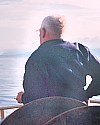
Died 25 Oct 1989 at age 80 (born 21 Sep 1909).
Richard Howell Fleming was a Canadian-American oceanographer who researched ocean currents, chemistry and biochemistry. He applied oceanography for military uses (1941-51) and studied the disposal of atomic wastes in the ocean. Fleming worked with the first comprehensive synoptic two-year survey (1955-56) of the Northern Pacific Ocean, charting currents, tides, winds, depths, and temperatures and observing plant and animal life. In 1959, for the Atomic Energy Commission, he began investigating the feasibility of creating a harbor in Alaska by nuclear explosions. He co-authored the comprehensive The Oceans: Their Physics, Chemistry, and General Biology, (1942).[Image: Fleming on the bow of the Bureau of Commercial Fisheries Ship Brown Bear, Jul 1960]
Richard Howell Fleming was a Canadian-American oceanographer who researched ocean currents, chemistry and biochemistry. He applied oceanography for military uses (1941-51) and studied the disposal of atomic wastes in the ocean. Fleming worked with the first comprehensive synoptic two-year survey (1955-56) of the Northern Pacific Ocean, charting currents, tides, winds, depths, and temperatures and observing plant and animal life. In 1959, for the Atomic Energy Commission, he began investigating the feasibility of creating a harbor in Alaska by nuclear explosions. He co-authored the comprehensive The Oceans: Their Physics, Chemistry, and General Biology, (1942).[Image: Fleming on the bow of the Bureau of Commercial Fisheries Ship Brown Bear, Jul 1960]
The Oceans - Their Physics, Chemistry, and General Biology, by Johnson, Fleming and Sverdrup. - book suggestion.
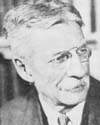
Died 25 Oct 1934 at age 77 (born 25 Jul 1857).
Frank (Julian) Sprague was an American engineer, inventor, and a pioneer in electric railway transportation. He started his career at sea in the U.S. Navy (1878). Later, he worked at the Brooklyn Navy Yard making plans for incadescent electric lamps on navy vessels, which led to joining Edison at Menlo Park (1883) He formed the Sprague Electric Railway and Motor Company in 1884, and became known as "the father of electric railway traction." when he installed the first U.S. electric trolley system (Richmond, Va., 1887). Edison took over this company in 1892. Sprague earned many patents, many for railway applications and diverse ideas such as electric toasters, electric signs, electric elevators and naval weaponry.
Frank (Julian) Sprague was an American engineer, inventor, and a pioneer in electric railway transportation. He started his career at sea in the U.S. Navy (1878). Later, he worked at the Brooklyn Navy Yard making plans for incadescent electric lamps on navy vessels, which led to joining Edison at Menlo Park (1883) He formed the Sprague Electric Railway and Motor Company in 1884, and became known as "the father of electric railway traction." when he installed the first U.S. electric trolley system (Richmond, Va., 1887). Edison took over this company in 1892. Sprague earned many patents, many for railway applications and diverse ideas such as electric toasters, electric signs, electric elevators and naval weaponry.
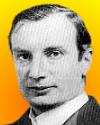
Died 25 Oct 1930 at age 70 (born 15 Mar 1860).
Waldemar Mordecai Wolfe Haffkine was a Russian-British bacteriologist who worked to reduce deaths by cholera. He worked under Émile Roux at the Pasteur Institute in Paris, taking a particular interest in cholera, since epidemics were frequent in Europe. In 1892, he prepared an attenuated strain of cholera culture. He believed in its safely and he tested it on himself after self-injecting a concentrated strain. In 1893, he went to India, where he inoculated 45,000 people to protect them against endemic cholera, despite difficult working conditions, a suspicious population, even with opposition from British medical officials. He reduced the death rate by 70% among those inoculated. He also attempted to produce a vaccine against the plague.
Waldemar Mordecai Wolfe Haffkine was a Russian-British bacteriologist who worked to reduce deaths by cholera. He worked under Émile Roux at the Pasteur Institute in Paris, taking a particular interest in cholera, since epidemics were frequent in Europe. In 1892, he prepared an attenuated strain of cholera culture. He believed in its safely and he tested it on himself after self-injecting a concentrated strain. In 1893, he went to India, where he inoculated 45,000 people to protect them against endemic cholera, despite difficult working conditions, a suspicious population, even with opposition from British medical officials. He reduced the death rate by 70% among those inoculated. He also attempted to produce a vaccine against the plague.
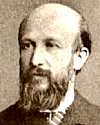
Died 25 Oct 1922 at age 73 (born 21 Apr 1849). quotes
Oskar (Wilhelm August) Hertwig was a German embryologist and cytologist who did extensive work on the nuclear transmission of heredity. He was the first to recognize that the essential event in fertilization is the fusion of the nuclei of the sperm and ovum. In 1875, he observed all the steps in fertilization, including the union of egg and sperm chromosomes in sea urchins. These animals are particularly suitable for microscopic studies because of their transparency. He saw there was a single nucleus before fertilization and two nuclei immediately afterwards. He realized the second nucleus had come from the spermatazoon, and thus a single spermatazoon can fertilize an egg. He also investigated malformations of vertebrate embryos.
Oskar (Wilhelm August) Hertwig was a German embryologist and cytologist who did extensive work on the nuclear transmission of heredity. He was the first to recognize that the essential event in fertilization is the fusion of the nuclei of the sperm and ovum. In 1875, he observed all the steps in fertilization, including the union of egg and sperm chromosomes in sea urchins. These animals are particularly suitable for microscopic studies because of their transparency. He saw there was a single nucleus before fertilization and two nuclei immediately afterwards. He realized the second nucleus had come from the spermatazoon, and thus a single spermatazoon can fertilize an egg. He also investigated malformations of vertebrate embryos.
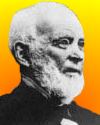
Died 25 Oct 1900 at age 81 (born 4 Jul 1819).
E(dward) R(obinson) Squibb was a U.S. chemist and pharmaceutical manufacturer who improved the purity and reliability of drugs. While a U.S. Navy medical officer, he convinced the Navy to manufacture their own drugs to ensure better quality. In 1851, he set up a laboratory to do this at the Brooklyn Naval Hospital. He distilled ether (for use as an anesthetic) using a still heated by a steam coil, thus eliminating the dangers of an open flame. He published the results of his discoveries instead of patenting them. Between 1852-57 he also made chloroform, bismuth salts, fluid extracts and other preparations. By 1858, he had his own business with 38 products, the start of a drug manufacturing enterprise that by1883 offered 324 products.«
E(dward) R(obinson) Squibb was a U.S. chemist and pharmaceutical manufacturer who improved the purity and reliability of drugs. While a U.S. Navy medical officer, he convinced the Navy to manufacture their own drugs to ensure better quality. In 1851, he set up a laboratory to do this at the Brooklyn Naval Hospital. He distilled ether (for use as an anesthetic) using a still heated by a steam coil, thus eliminating the dangers of an open flame. He published the results of his discoveries instead of patenting them. Between 1852-57 he also made chloroform, bismuth salts, fluid extracts and other preparations. By 1858, he had his own business with 38 products, the start of a drug manufacturing enterprise that by1883 offered 324 products.«
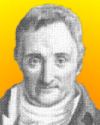
Died 25 Oct 1826 at age 81 (born 20 Apr 1745).
French physician who pioneered in the humane treatment of the mentally ill. In 1792 he became the chief physician at the Paris asylum for men, Bicêtre, and made his first bold reform by unchaining patients, many of whom had been restrained for 30 to 40 years. He did the same for the female inmates of Salpêtrière when he became the director there in 1794. Discarding the long-popular equation of mental illness with demoniacal possession, Pinel regarded mental illness as the result of excessive exposure to social and psychological stresses and, in some measure, of heredity and physiological damage.
French physician who pioneered in the humane treatment of the mentally ill. In 1792 he became the chief physician at the Paris asylum for men, Bicêtre, and made his first bold reform by unchaining patients, many of whom had been restrained for 30 to 40 years. He did the same for the female inmates of Salpêtrière when he became the director there in 1794. Discarding the long-popular equation of mental illness with demoniacal possession, Pinel regarded mental illness as the result of excessive exposure to social and psychological stresses and, in some measure, of heredity and physiological damage.
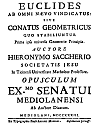

Italian mathematician who worked to prove the fifth postulate of Euclid, which can be stated as, "Through any point not on a given line, one and only one line can be drawn that is parallel to the given line." Euclid saw the proof was not self-evident, yet neither did he provide one; instead he accepted it as an assumption. Subsequently many mathematicians tried to prove this fifth postulate from the remained axioms - and failed. Saccheri took the novel approach of first assuming that the postulate was wrong, then followed the all consequences seeking any one contradiction that then leaves the only original postulate as the only possible solution. In the process, he came close to discovering non-Euclidian geometry, but gave up too early.[Image, right: Saccheri Quadrilateral, used as the starting point of his exploration of these geometries (source)]
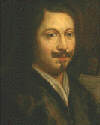
Died 25 Oct 1647 at age 39 (born 15 Oct 1608). quotes
Born in Faenza, Italy, Torricelli was an Italian physicist and mathematician who invented the barometer and whose work in geometry aided in the eventual development of integral calculus. Inspired by Galileo's writings, he wrote a treatise on mechanics, De Motu ("Concerning Movement"), which impressed Galileo. He also developed techniques for producing telescope lenses. The barometer experiment using "quicksilver" filling a tube then inverted into a dish of mercury, carried out in Spring 1644, made Torricelli's name famous. The Italian scientists merit was, above all, to admit that the effective cause of the resistance presented by nature to the creation of a vacuum (in the inverted tube above the mercury) was probably due to the weight of air.
Born in Faenza, Italy, Torricelli was an Italian physicist and mathematician who invented the barometer and whose work in geometry aided in the eventual development of integral calculus. Inspired by Galileo's writings, he wrote a treatise on mechanics, De Motu ("Concerning Movement"), which impressed Galileo. He also developed techniques for producing telescope lenses. The barometer experiment using "quicksilver" filling a tube then inverted into a dish of mercury, carried out in Spring 1644, made Torricelli's name famous. The Italian scientists merit was, above all, to admit that the effective cause of the resistance presented by nature to the creation of a vacuum (in the inverted tube above the mercury) was probably due to the weight of air.

In 1990, the first transplant operation of a lung from a live donor to a recipient is performed by Dr. Vaughn A. Starnes, Stanford University Medical Center, Stanford, California. A mother was the living donor to her 12-year-old daughter. Dr Starnes is a world-renowned pediatric cardiothoracic surgeons who has performed several transplantation "firsts," including transplanting a heart and lung into a four-month old baby - the youngest ever. Lung transplantation was first attempted in 1963, and heart-lung transplantation in 1968. The first successful heart-lung transplant, by Dr. Bruce Reitz, was at Stanford in 1981. The world's first successful lung transplants were at Toronto General Hospital, Ont. (Single lung, 1983; double,1986).
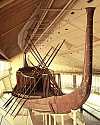
In 1987, at Giza, Egypt, the second of Cheops’ solar boats was first viewed using a specialized video camera, passed through a hole drilled one of the limestone slabs covering the pit in which the boat had lain undisturbed for 4,600 years. The hole was drilled over the three preceding days, with careful technique to retain the original air in the sealed chamber. After extensive video records were made, the entrance hole was resealed. The first funeral craft of the pharaoh Cheops (aka Khufu) was discovered 26 May 1954. It had been built from sacred sycamore and cedar woods, ready to carry his soul to heaven and sealed in a stone-slab covered pit beside his pyramid. It was eventually removed for museum display.«[Image: Museum display of the first Cheops boat discovered.]
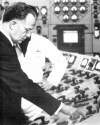
In 1962, Belgium's first nuclear powered generation of electricity began with the inauguration of the BR-3 power plant at Mol by Minister Spinoy. The BR-3 Pressurized Water Reactor was the firstPWR-type in Europe. Construction began Jan 1956 and it ceased operation 30 Jun 1987 at the end of its Westinghouse license. The BR-1 was a research reactor put into operation at Mol in 1956 with thermal power of 4 MW. The BR-2 was a materials testing reactor at Mol in 1963 with thermal power 80 MW. Presently, Belgium produces 55% of their electricity from seven newer nuclear units, at Doel and Tihange, which generated almost 44 TWh in 1998.
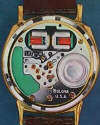
In 1960, the Accutron 214, the world's first electronic wristwatch by Bulova, was placed on sale in New York City. The original circuit used a germanium PNP transistor circuit with a 360-Hz tuning fork, used for timing accuracy. In 1977 it was replaced by quartz watches. The Accutron has the potential accuracy of better than 2 seconds per day, remarkable in its day of mechanical watches. In 1953, tuning fork watch development began in Switzerland and prototype watches were made in 1955. Its Swiss engineer was Max Hetzel, who moved in 1959 to continue his development of the Bulova Accutron in New York with William Bennett. The CEO of Bulova at the time was Omar Bradley, 5 Star General, US Army, Retired.

In 1955, the first domestic microwave oven was sold by Tappan. In 1947, Raytheon demonstrated the "Radarange," the world's first microwave oven. Ratheon's commercial, refrigerator-sized microwave ovens cost between $2,000 and $3,000. In 1952, Raytheon entered into a licensing agreement with Tappan Stove Company which had a consumer distribution and marketing infrastructure. In 1955, Tappan introduced the first domestic microwave oven, a 220-volt more compact wall-unit the size of a conventional oven, but less powerful microwave generating system. It had two cooking speeds (500 or 800 watts), stainless steel exterior, glass shelf, top browning element and a recipe card drawer. However, at $1,300 sales were slow.«[Image: Oven shown on cover of Tappan "Commercial Electronic" Replacement Parts Catalog revised issue of 15 May 1964.]
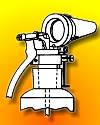
(USPTO)
In 1881, Leslie L. Curtis of Cape Elizabeth, Maine, patented an air brush painting device. His patent No. 248,579 describes an "Atomizer for Coloring Pictures," which was a "device for easy, accurate, and rapid distribution of coloring and shading upon drawings and paintings." Coloring matter could be projected upon the picture in the form of a fine spray. It was drawn up a tube from a bottle when air passed over an aperture in the upper end of the tube and was separated into a fine spray. The fineness of the spray could be regulated. Holes were provided in the rear of the air-tube to be covered with the thumb of the hand that held the container while in use. Removing the thumb caused the flow of coloring material from the fine nozzle to cease.
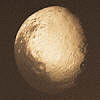
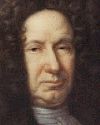
Cassini




